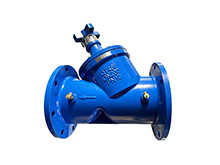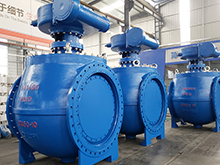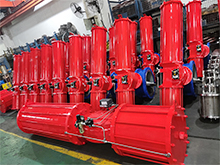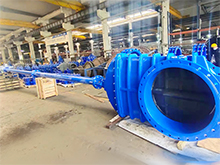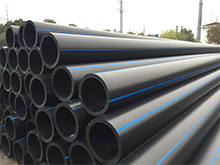- Gate valve
-
- DN1000 Extension stem double flange soft seal gate valveDIN F4 resilient seated gate valveDN450-1200 Resilient Seated Gate ValveDIN F5 resilient seated gate valveSocket connection soft seal gate valveUnderground cap soft seal gate valveBS5163 rising stem soft seal gate valveHard seal gate valveAPI slab Gate ValveStainless steel flange gate valveWafer knife gate valvePneumatic gate valveSoft seal gate valveExtension stem gate valveUL/FM fire protection groove ends gate valveRising stem forged steel gate valvecarbon steel gate valveStainless steel threaded gate valveDIN soft seal gate valveANSI soft sealing gate valve 200PSICast iron gate valveBS resilient seated gate valve
- Butterfly valve
-
- DN900 pneumatic triple eccentric hard seal butterfly valveD643H Triple Eccentric Butterfly ValveD343H Hard seal butterfly valveMulti standard EPDM seated butterfly valveSingle flange butterfly valveDN2000 Double eccentric butterfly valveFlange butterfly valveLug butterfly valveWafer butterfly valve with handleWorm gear operated butterfly valveWafer lined fluorine butterfly valveStainless steel wafer butterfly valveStainless steel flanged butterfly valveThree eccentric flange butterfly valvePneumatic flanged butterfly valvePneumatic wafer butterfly valveTriple eccentric butterfly valve wafer typeWafer butterfly valve ULC approvedInflatable seat butterfly valveHigh performance butterfly valveGrooved end butterfly valveElectric soft seal butterfly valveFlange fluorine lined butterfly valveHandle aluminum butterfly valveWorm Gear Aluminum Butterfly ValveFull PTFE lined butterfly valve wafer typeOne stem no-pin wafer butterfly valveMulti standard aluminum stem butterfly valveStainless Steel wafer Butterfly ValveAluminium handle operated lug butterfly valveLever Operated Flange Butterfly ValveButterfly valve stemButterfly valve discButterfly valve seat
- Ball valve
-
- DN1400 top-mounted eccentric semi-ball valveFlanged three-way ball valveFully welded ball valveNatural gas ball valveHigh platform flange ball valve1 PC ball valveFixed ball valvePTFE seat flanged ball valveMetal seat ball valveAPI 6D ball valve3 Piece ball valveFull Bore 3 way ball valve L-Port3 Way T-Port ball valve2PC Ball valve female thread stainless steel
- Globe Valve
-
- API Carbon Steel Globe ValveBellows Globe ValveStainless steel flange globe valveStainless steel thread S type globe valveStainless steel thread B type globe valveCast Steel Globe ValvePiston Globe ValveWCB Carbon Steel Globe Check Valveelectric motorized control stainless steel SS316 globe valveBrass Globe ValveCryogenic Globe valveHT200 Globe ValveThreaded Stainless Steel Globe ValveGG25 Globe ValveANSI API Cast Steel And Stainless Steel Globe valve
- Check valve
-
- Rubber seal check valveDN800 Slow closing check valveDN800 Rubber Disc Check ValveButterfly Buffering Check Valvecheck valve with counter weightSilent Check ValveWCB Swing check valveSwing Check ValveSingle Chip Check Valve H74WStainless Steel Wafer Check ValveSwing Start Check ValveFoot check valveAPI Swing Check ValveDIN Flange check valveSingle plate check valveLifting Check ValveBottom ValveHammer Diminish Noises Check ValveWafer Check ValveWafer dual plate check valve
- Control valve
-
- Static Balancing ValveCage Guided Sleeve Globe Control ValveDN1000 Piston Flow Regulating ValveDN1600 Electric Actuator Flow Regulating ValvePneumatic Flanged Butterfly ValvePneumatic Wafer Butterfly ValveAngle Seat ValvePneumatic gate valveElectric three-way control valveElectric sleeve control valve
- Water Meter
-
- Vertical Type Water MetersStainless steel threaded water meterPiston water meterPlastic water meterMore flow rotor dry water meterspiral vane flange water meterCI wotlman water meter with pulse outputLXCLG(R) Vertical removable element woltman cold (hot) water meterSingle flow rotor dry water meterPrepaid Token Water MeterElectromagnetic flowmeterRotary Piston Liquid Sealed Water MeterRotary Piston Liquid Sealed Water Meter
- Air valve
-
- Double ball exhaust valveDoubleair Air Valve SaudiDoubleair Air Valve Southeast AsiaDoubleair Air Valve South AmericaDouble Air ValveThreaded Air ValveSingle Air ValveTriple Functions Air ValveAutomatic Air Release ValveAutomatic release valveAutomatic exhaust valveComposite Exhaust Air ValveBrass exhaust valveDouble Ball Air Valve
- Pipe Repair & Coupling
-
- Flexible Multi-Function Pipe Coupling ZFJ-SSS Semi-Circle Pipe Repair Clamp SJW-HDuctile Iron Band Repair ClampStainless Steel Band Repair ClampDouble-Section Pipe Repair CouplingFolding Type Pipe RepairSingle-Section Multi-Function Pipe Coupling MF-SGear-Ring Type Multi-Function Pipe Coupling GR-SZBW Damping Corrugated Hose
- Dismantling Joint
-
- VSSJAFC(CC2F) Detachable Flange Transmission JointVSSJA-2(B2F) Double Flange Limited Expansion JointVSSJA-1(BF) Single Flange Limited Expansion JointVSSJA(AF) Flange Loose Expansion JointJGD-B Threaded Rubber JointZBW Damping Corrugated HoseKXT-S Flexible Dual-Spherical Rubber JointKXT Rubber Soft JointFlange Adaptor
Top 7 Valves for HVAC Systems: How to Choose the Right Type for Your Project
2025-07-20
Introduction: Why Valve Selection Matters in HVAC Systems
At WEIZIDOM Solution, we specialize in manufacturing high-quality valves for HVAC applications, including butterfly valves, ball valves, check valves, and more. In this guide, we’ll break down the top 10 valves used in HVAC systems, their key benefits, and how to select the best option for your project.
By the end of this article, you’ll know:
* Which valves are best for chilled water, heating, and refrigerant systems
* Key factors to consider when selecting HVAC valves (pressure, material, and flow control)
* How to reduce energy waste and maintenance costs with the right valve choice
Let’s dive in!
Common HVAC Valves & Materials Specification
|
Valve Type
|
Primary Function
|
Standard Materials
|
Typical HVAC Applications
|
|
Large-diameter flow control/isolation
|
Body: Cast Iron, Stainless Steel (CF8M)
Disc: SS304, Aluminum Bronze |
Chilled water systems, AHUs
|
|
|
Refrigerant/steam line shutoff
|
Body: Brass (CW617N), SS316
Ball: PTFE-coated stainless |
Heat pumps, chillers, boiler feed
|
|
|
Prevent backflow
|
Body: Cast Iron, SS304
Disc: Nylon + SS spring |
Pump discharge, condenser lines
|
|
|
Main pipeline isolation
|
Body: Ductile Iron (QT450), Carbon Steel (WCB)
Gate: SS304 |
Steam mains, fire sprinkler lines
|
|
|
Precise flow regulation
|
Body: Brass, SS304
Stem: SS304 |
Boiler feedwater, manifold control
|
|
|
Balancing Valve
|
Hydronic system flow distribution
|
Body: Ductile Iron
Measuring ports: Copper alloy |
HVAC branch circuits, radiant floors
|
|
Pressure Reducing Valve
|
Maintain downstream pressure
|
Body: Carbon Steel
Diaphragm: EPDM rubber |
Steam stations, high-rise water supply
|
|
Solenoid Valve
|
Automated refrigerant/condensate control
|
Body: Brass, SS304
Coil: Class H insulation |
Chillers, humidifier water lines
|
Gate Valves – For Straight-Line Flow Shutoff
Best for: Main water supply lines, steam systems, and infrequent operation points
Gate valves provide unrestricted flow when fully open, making them ideal for isolation applications where minimal pressure drop is critical.
Key Benefits:
* Full-bore design – Zero flow restriction when open
* Bi-directional sealing – Works for both forward/reverse flow
* Durable construction – Often used in high-temperature steam systems
* Bi-directional sealing – Works for both forward/reverse flow
* Durable construction – Often used in high-temperature steam systems
Common HVAC Uses:
* Main water supply shutoff
* Steam boiler isolation
* Large-diameter piping systems
Note: Not suitable for throttling – use only for fully open/closed applications.
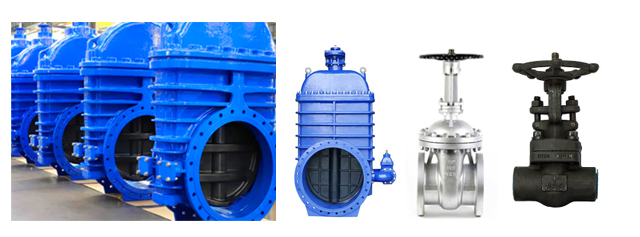
Butterfly Valves – The Go-To for Large HVAC Systems
Best for: Chilled water systems, cooling towers, and air handling units
Butterfly valves are lightweight, cost-effective, and easy to install, making them a popular choice for HVAC applications requiring large-diameter flow control.
Key Benefits:
* Low pressure drop – Minimizes energy loss in water distribution
* Compact design – Saves space compared to gate valves
* Quick operation – Ideal for systems requiring frequent adjustments
* Compact design – Saves space compared to gate valves
* Quick operation – Ideal for systems requiring frequent adjustments
Common HVAC Uses:
* Cooling tower isolation
* Chilled water shut-off
* Air handling unit (AHU) control
Ball Valves – Reliable Shut-Off for Refrigerant & Heating Lines
Best for: Refrigeration systems, heat pumps, and hydronic heating
Ball valves provide bubble-tight shut-off, making them essential for HVAC refrigerant lines and heating systems where leakage must be avoided.
Key Benefits:
* Zero leakage – Critical for refrigerant and gas applications
* Durability – Stainless steel or brass options for corrosion resistance
* Full-port design – Reduces flow restriction
* Durability – Stainless steel or brass options for corrosion resistance
* Full-port design – Reduces flow restriction
Common HVAC Uses:
* Refrigerant line isolation
* Boiler feed water control
* Heat exchanger shut-off
Check Valves – Preventing Backflow in Chiller Systems
Best for: Pump protection, chillers, and condenser water systems
Check valves (or non-return valves) ensure one-way flow, preventing costly damage from water hammer or reverse flow in HVAC systems.
Key Benefits:
* Automatic operation – No manual intervention needed
* Reduces pump wear – Protects against backflow damage
* Silent vs. swing check options – Choose based on system requirements
* Reduces pump wear – Protects against backflow damage
* Silent vs. swing check options – Choose based on system requirements
Common HVAC Uses:
* Chilled water pump discharge
* Condenser water systems
* Boiler feed lines
Globe Valves – Precision Flow Control
Best for: Boiler feedwater, condenser water, and throttling applications
Key Benefits:
* Excellent throttling capability
* Finer control than gate/butterfly valves
* Available in angled designs for compact spaces
* Finer control than gate/butterfly valves
* Available in angled designs for compact spaces
Common HVAC Uses:
* Boiler feedwater control
* Condenser water balancing
* Steam radiator control
Pro Tip: Use Y-pattern globe valves for high-pressure steam to reduce erosion.
Pressure Reducing Valves (PRVs) – System Protection
Best for: Steam systems, high-rise HVAC, and pump discharge
PRVs automatically lower downstream pressure, preventing pipe damage and ensuring consistent operation.
Key Benefits:
* Maintains safe system pressures
* Reduces water hammer risk
* Self-adjusting for load changes
* Reduces water hammer risk
* Self-adjusting for load changes
Common HVAC Uses:
* Steam distribution networks
* High-rise building water supply
* Pump discharge protection
Spec Check: Always size PRVs based on max flow rate, not just pipe diameter.
Bonus: Valve Selection Checklist
When specifying HVAC valves, always verify:
* Pressure/temperature rating vs. system requirements
* Material compatibility (e.g., brass for water, stainless for refrigerant)
* Flow characteristics (full-port vs. reduced-port)
* Actuation method (manual, electric, pneumatic)
* Certifications (ASME, ANSI, ISO for industrial projects)
Frequently Asked Questions (FAQs) About HVAC Valves
* What is the best valve for chilled water systems?
Butterfly valves are ideal for large-diameter chilled water pipes, while ball valves work best for smaller refrigerant lines.
* How do I prevent water hammer in HVAC systems?
Use slow-closing check valves or install pressure surge arrestors to minimize hydraulic shock.
* Can I use brass valves for refrigerant applications?
Yes, but stainless steel or forged brass valves are recommended for high-pressure refrigerant systems.
* What’s the difference between a balancing valve and a regular globe valve?
Balancing valves have calibrated flow measurement ports, allowing precise hydraulic balancing in HVAC systems.
* How often should HVAC valves be maintained?
Annual inspections are recommended, with lubrication and seal replacement as needed.
* Where can I buy high-quality HVAC valves in bulk?
WEIZIDOM Solution supplies ISO-certified valves for HVAC systems—contact us for wholesale pricing!
Need Custom Valve Solutions?
As a leading valve manufacturer, WSD Solution provides:
* HVAC-specific valve designs
* Material customization (brass, stainless, Ductile Iron)
* Bulk order discounts
Contact Us:


